Pergamon
The Pinnacle of Hellenistic Art and Culture
Pergamon, once the capital of the powerful Attalid dynasty, was a major cultural and political center in ancient Asia Minor. Known for its grand monuments, including the iconic Altar of Zeus and a vast library, Pergamon stands as a testament to the architectural and intellectual achievements of the Hellenistic world.
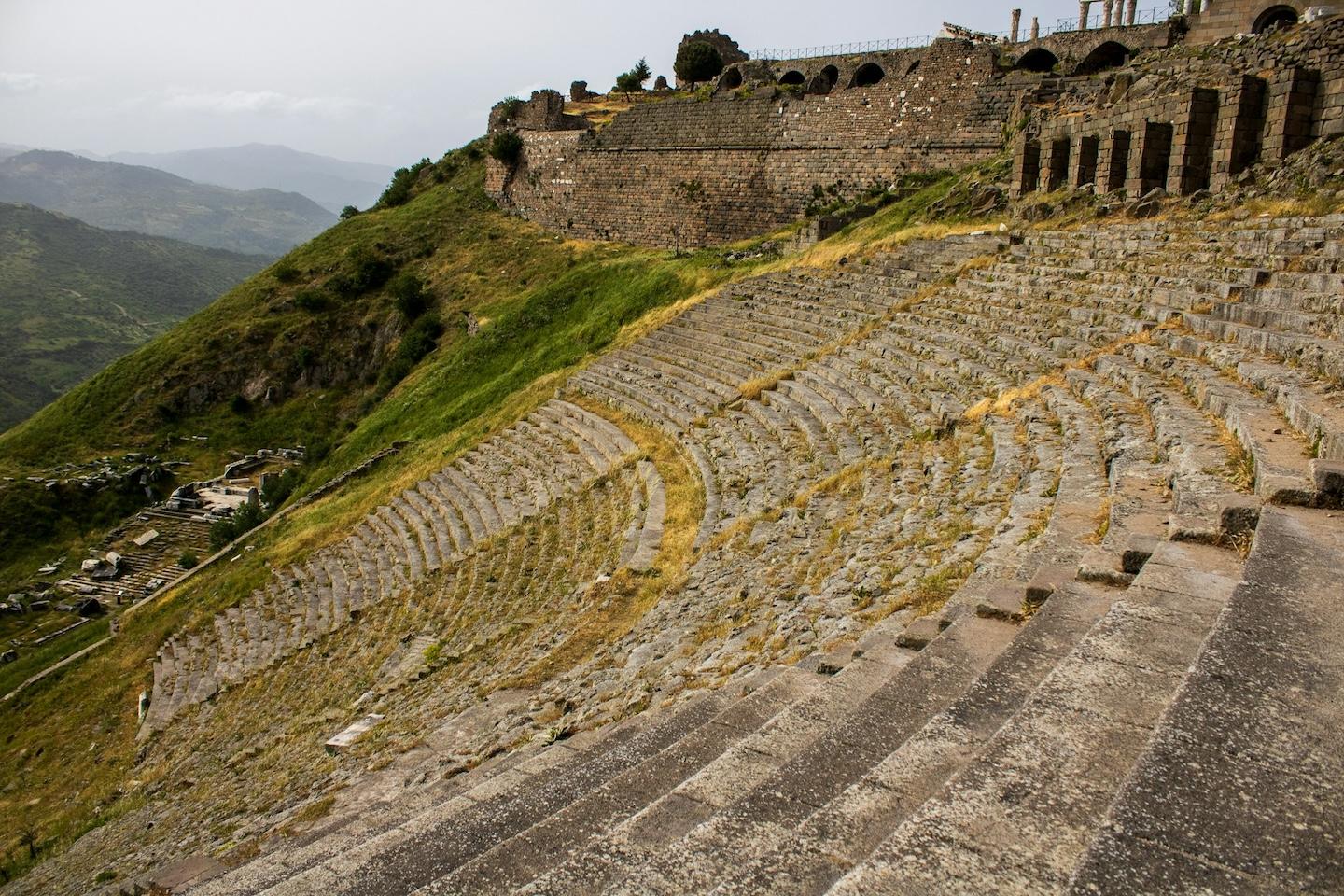
1.History
Pergamon (also known as Pergamum) was an influential and wealthy ancient Greek city located in the northwest of Asia Minor, near what is today Bergama in Turkey. The city became the capital of the Hellenistic Attalid dynasty, gaining recognition for its cultural and political power during the Hellenistic and Roman periods. Set upon a steep acropolis, Pergamon boasted a wide array of monumental structures, including temples, theaters, a library, stoa, and a massive altar, all designed with impressive urban planning. Its strategic location and artistic contributions made it one of the most important cities of its time.
Pergamon’s origins can be traced to the Archaic period, evidenced by pottery fragments dating back to the 8th century BC. However, it rose to prominence during the Hellenistic period, particularly under the Attalid dynasty (beginning with Attalus I, who ruled from 241 to 197 BC). The Attalids turned Pergamon into one of the leading cultural centers of the Greek world, heavily investing in art, architecture, and scholarship. The city’s most famous ruler, Eumenes II, built many of its grand structures, including its world-renowned library, second only to the Library of Alexandria.
After being bequeathed to the Romans in 133 BC, Pergamon became the capital of the Roman Province of Asia, further developing its political and cultural institutions. Structures like the Asclepion healing center and Trajan Temple were built during the Roman period, and the city continued to thrive, boasting a population of around 200,000 at its height.During the Byzantine period, Pergamon declined in importance as trade routes shifted and political centers moved toward Istanbul (Constantinople). The city later fell under Ottoman rule and continued to play a minor role until the modern era.
Cultural and Architectural Significance
Pergamon is renowned for its artistic and architectural achievements. The city was a significant center for Hellenistic sculpture, influencing the “Pergamon style,” which is characterized by dynamic compositions and dramatic expressions. The Pergamon Altar, dedicated to Zeus and Athena, is a monumental structure famous for its richly decorated friezes, now partially preserved in the Pergamon Museum in Berlin. The altar’s depictions of the battle between gods and giants are considered masterpieces of Hellenistic art.The Library of Pergamon is another iconic structure, said to have housed over 200,000 scrolls, making it second only to the Library of Alexandria. It became a major center of learning, with many scholars flocking to the city for study.

Theatre of Pergamon: Built during the Hellenistic period, the theatre could hold approximately 10,000 people and is noted for its steep seating arrangement, offering stunning views of the surrounding landscape. Other theaters were constructed later during the Roman period.Temple of Trajan and Zeus Philios: Located at the highest point of the city’s citadel, this temple honored the Roman emperor Trajan and Zeus. The temple stands as a testament to Pergamon’s imperial significance during the Roman period.Sanctuary of Athena: This is one of Pergamon’s oldest structures, dating to the 4th century BC. The temple was designed in the Doric style and stood at the heart of the acropolis, symbolizing the city’s power and dedication to knowledge and the arts. Asclepion: Pergamon was also famous for its healing center dedicated to the god of medicine, Asclepius. The Asclepion of Pergamon became a significant sanctuary for healing, where patients from across the Mediterranean would come for treatment using sacred springs, therapy, and other rituals. The Asclepion is a well-preserved example of Roman and Greek approaches to medicine and spirituality.The Altar of Zeus: Perhaps the most famous of Pergamon’s monuments, the altar dates to the 2nd century BC. Its vast frieze, which depicts the Gigantomachy (the battle between the gods and giants), is considered one of the great works of ancient art. Although much of the altar is now housed in the Pergamon Museum in Berlin, it remains a symbol of the city’s artistic prowess.
Under Roman rule, Pergamon’s importance continued, with major constructions like the Temple of Trajan, aqueducts, and amphitheaters. The Serapeum, or Red Basilica, a massive temple dedicated to Egyptian gods, was also built during this time. The city maintained its role as a cultural and religious hub, blending Greek, Roman, and Eastern influences.Today, Pergamon is recognized for its immense historical and cultural value, with its remains providing a unique glimpse into the grandeur of Hellenistic and Roman urban planning. The city’s monuments, especially the Pergamon Altar and Library, underscore its status as a major intellectual and cultural center of the ancient world. Pergamon was inscribed on the UNESCO World Heritage List in 2014, emphasizing its significance in world history.In conclusion, Pergamon stands as a testament to the artistic, political, and intellectual achievements of the ancient world, and its legacy continues to influence modern archaeological and historical studies.
2.How to get there
Pergamon is located near the modern town of Bergama, in İzmir Province. To get to Pergamon, you can take a bus from İzmir’s main bus station to Bergama, which is approximately a two-hour ride. From Bergama, there are regular local buses or taxis that can take you to the site, including the famous Acropolis. For those with private vehicles, follow the signs to Bergama from İzmir, then head to the cable car station, which takes you up to the Acropolis for a full view of the ancient city.
3.GALLERY

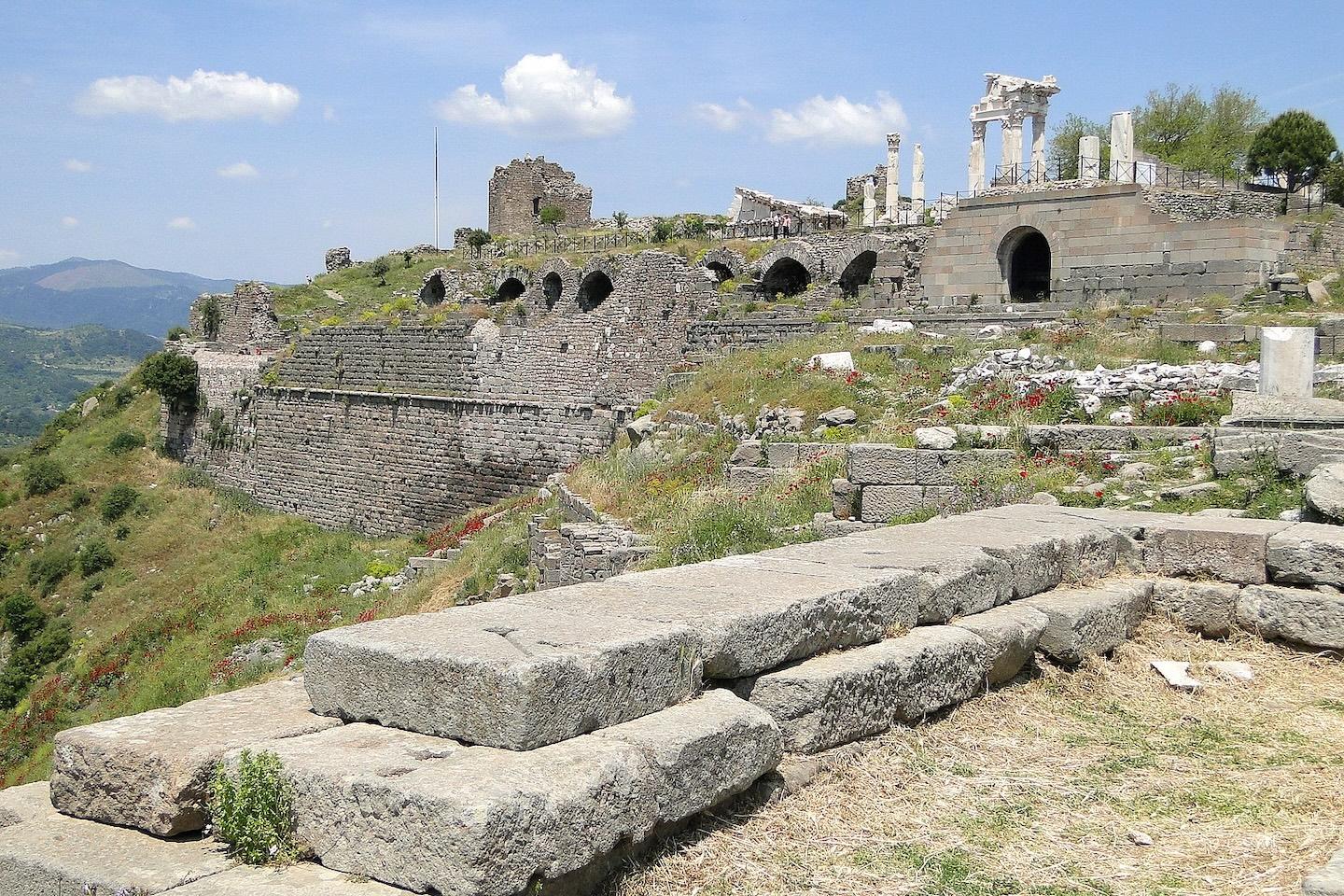

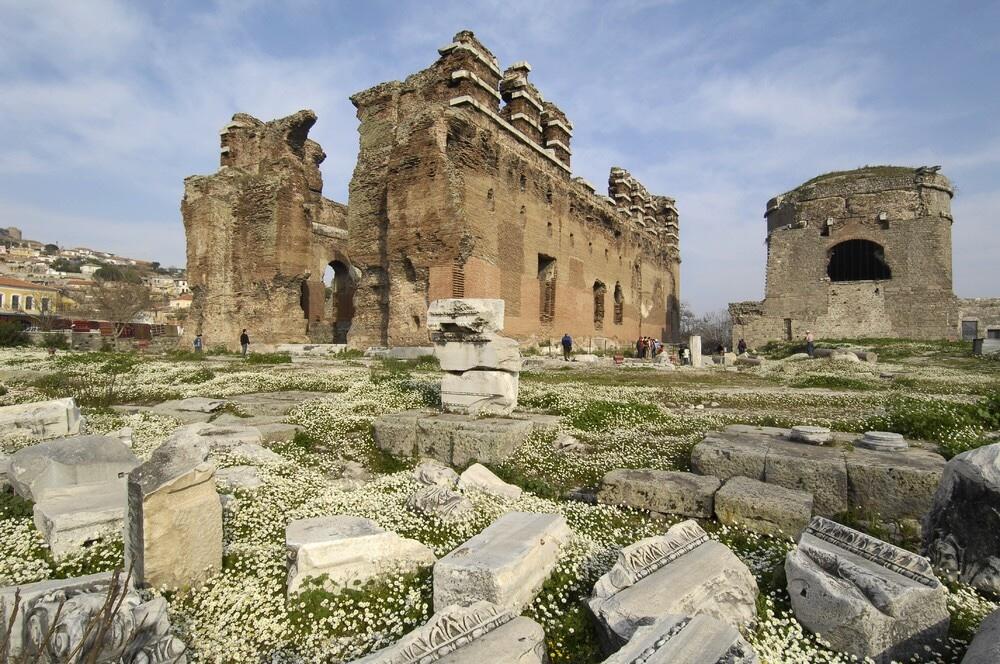
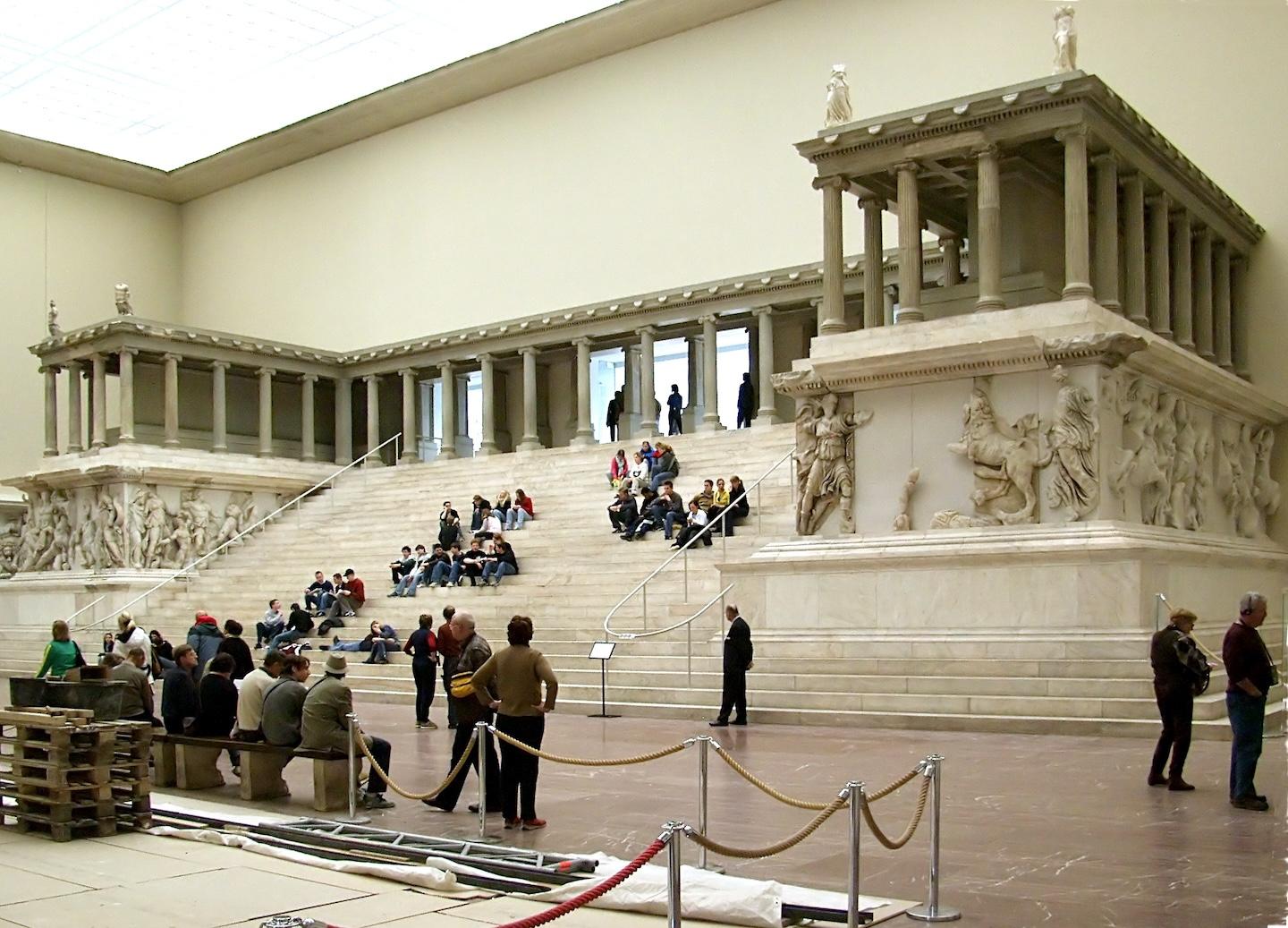
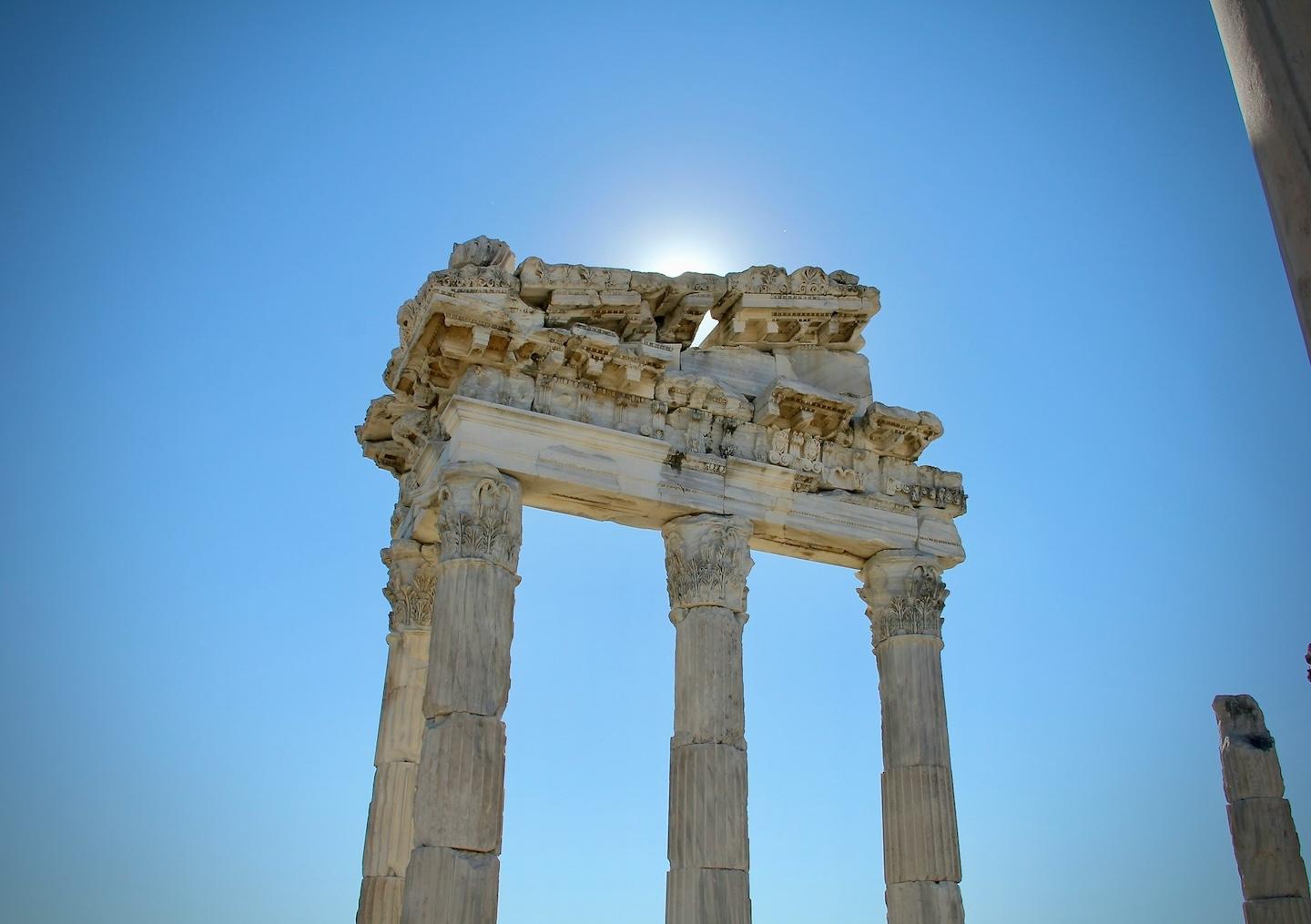
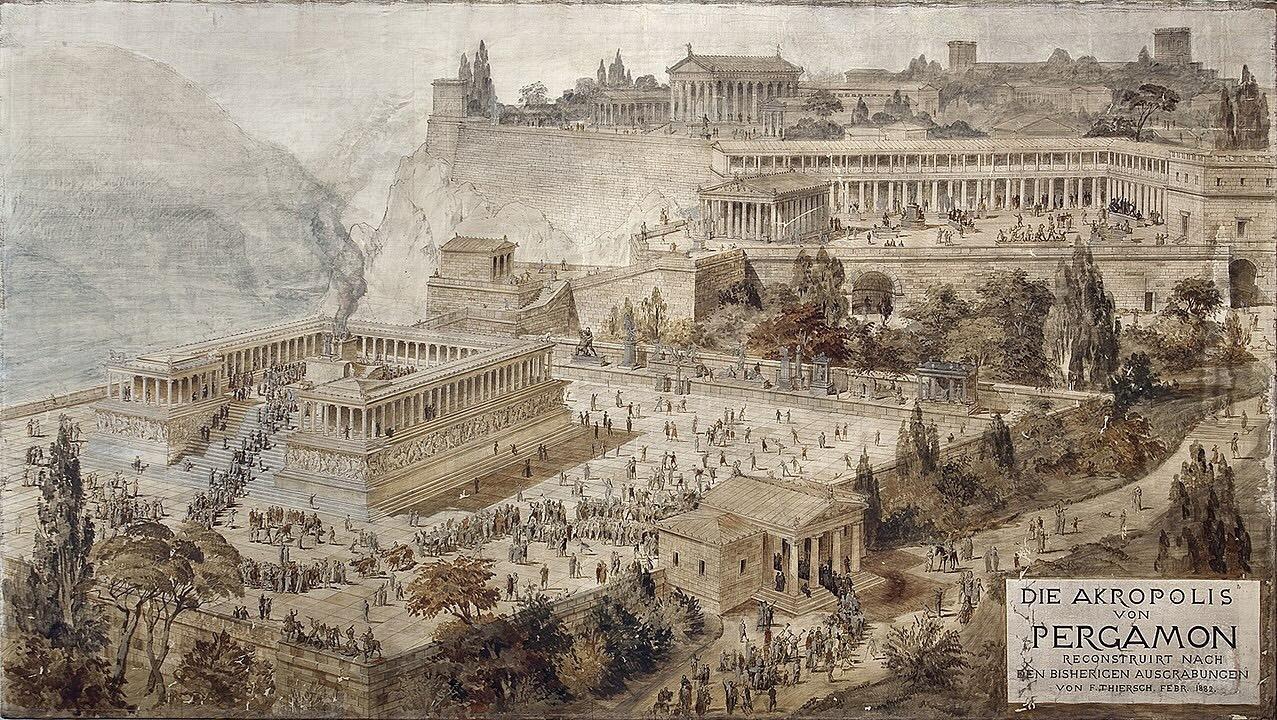
4.Explore Nearby Sites
You can also explore several nearby historical spots around Pergamon. These close-by attractions offer further insight into the rich history of the region and are easily accessible for visitors wanting to extend their journey:

